Living With Your Thoughts
4 Tools To Help You

Living With Your Thoughts - Background
"Living With Your Thoughts" is the second in a two part series, which commenced with You Are Not Your Thoughts in which we discussed how to deal with your negative thoughts, such as thoughts of anger, accusation and despair.In summary:
- These thoughts arise automatically and are largely unconscious in their origination.
- These thoughts originate from the “hardware” and “software” in our brains.
- The best way of becoming more aware of the repetitive nature of these thoughts, and the triggers that give rise to them is by the practice of mindfulness.
- Because these repetitive negative thoughts are a short-cut key to the
underlying associated negative energetic states and, because we live in
an energetic universe , they are repetitively creating negative results in our lives.
This is what Buddhists refer to as Samsara and what I call 'the ferris wheel of suffering'.
The first key factor in living with your thoughts is to understand and develop a good working relationship with all areas of your mind.
Developing A Good Working Relationship With Your Mind A simple way to picture the mind is to imagine a ship on the ocean. Think of your higher self as your
conscious mind's portal to the universe – or as I call it The Energy Of Life. Understanding Your Selves The second key factor in living with your thoughts is to understand your many selves and learn how to deal with them. Contrary to the conventional view there is no singular "self". Which means that when you refer to "myself" you are not referring to one singular entity but a very complex
amalgam of many different aspects of your self sometimes referred to as the 'internal family of selves' -also known as 'sub-personalities'. The ego The higher self As we
experience this we realise that we have a spiritual or energetic self
and also that we have many unconscious aspects or selves that fall
outside of the control of "Windows 11". The unconscious mind The whole self Where it all goes horribly wrong Because we exist in a realm of duality, for every self that exists or is created there is an opposite.
Living With Your Thoughts - Your Mind
The
ship floats on the surface of the ocean and its purpose is to navigate
and transport you from one location to another. Think of the ship as
your conscious mind with access to many of the tools at its disposal,
for example: reasoning, calculation, speech and memory.
The
ocean is your subconscious mind, it is deep, dark and mysterious and
generates powerful currents which move the ship in the direction of their travel.
The
sky is your higher consciousness often referred to as your higher self
or higher power. The sky contains the clouds, the wind, the weather, the
planets, the stars... the universe.
For
the ship to navigate and transport you properly it needs access to the
ocean and the sky. The better that access the better your journey!
The key to developing a good working relationship with your mind is to have tools, techniques and resources that work with all levels of your mind.
The objective is to have them all working together, moving you in the same direction, and at the same time!
Living With Your Thoughts - Your Selves
When we talk of "myself" this is the conventional way of referring to our self image which is in fact the ego's construction of its sense of self.
I
find it helpful to imagine the ego as our operating system and
absolutely essential, in the same way "Windows 11" is essential for
successful functioning of our laptops. It thinks it controls everything.
But
as with "Windows 11", however clever it is, it is just a piece of
software. So when we say me, myself or I, metaphorically, think of
“Windows 11" with self awareness!
One of the benefits of practicing mindfulness, is that we
find that in the spaces between our thoughts, we begin to experience
that we are far more than this limited and conventional sense of self.
We are not “Windows 11”!
To
extend the computer analogy think of our unconscious aspects or selves
as the BIOS [the programme embedded on a chip on a computer's
motherboard that recognizes and controls various devices that make up
the computer.
So to pull this
together, when we talk of myself or I, what we are really referring to
is the totality of all of it - of all of our unconscious aspects or
selves, our conscious self (plus all its resources) and our spiritual
self or higher self.
Given
that we are fundamentally energetic beings existing in an energetic
universe we need to understand, relate to and work with our higher self.
It is the portal to, in the conventional sense, everything "out there".
However, ”Windows 11” is not an energetic being but it thinks it is!
Its
sphere of operation is defined by our sensory perceptions. For "Windows
11" seeing is believing. Because its role is to control it thinks it
does (or should) control everything. This is, of course, a major
delusion. This is where the whole teaching in mainstream belief systems
of dying to the self or 'dropping the self' comes into play.
The
BIOS is just the BIOS. It comprises large numbers of programmes or
selves that we can associate with an activity or an attitude. For
example "smoking self" or "happy self".
In the
realm of the BIOS there is no right or wrong, no better or worse, no
value judgements, there are just programmes running automatically on
repeat mode.
So, the opposite of smoking self is non-smoking self and the opposite of happy self is unhappy self.
This
is why we said earlier, that when we deny, suppress or repress our
negative thoughts it is a root cause of our suffering because we are
denying a part of our whole self.
So, for example, to stop smoking we have to accept 'smoking self' and consciously choose 'non smoking self'.
However the choice alone is not enough, it needs to be empowered and this power comes from our higher self - when we ask it.
Introducing The Tools Here are 4 sets of tools to help you that each work with one or more areas of our whole self:
Living With Your Thoughts - The Tools
(1) Energy Tools - that work with and through our higher self
(2) Cognitive Tools - that work through our conscious self
(3) Programming Tools - that work with our unconscious selves
(4) Big Mind Tools - that work with the whole self
These tools will help you achieve in
Energy Tools
Cognitive Tools
Programming Tools
'Big Mind' Tools
Recommended Further Reading:
- Why You Need To Be Intimate With Your Own Thinking
- Rewiring Your Autopilot – How To Harness Your Subconscious Mind
- Universal Awareness and the Machinery of Thought
- How to See Your Thoughts Without Becoming the Story
Return from "Living With Your Thoughts" to: Renewing Your Mind Or Return to: Techniques For Stress Management
LATEST ARTICLES
The Battle For Your Mind - How To Win Inner Freedom In A Digital Age Of Distraction
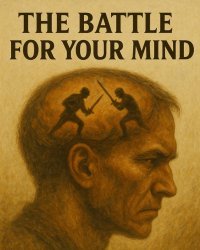 From External Events to Inner Events. We often think of “events” as things that happen out there: the traffic jam, the rude comment, the delayed email reply. But what truly shapes our experience is wh…
From External Events to Inner Events. We often think of “events” as things that happen out there: the traffic jam, the rude comment, the delayed email reply. But what truly shapes our experience is wh…How to See Your Thoughts Without Becoming the Story
 A Practical Guide to Thought-Awareness. You can spend your life inside the stories of your mind without ever learning how to see your thoughts clearly and objectively. Most of the stuff we tell oursel…
A Practical Guide to Thought-Awareness. You can spend your life inside the stories of your mind without ever learning how to see your thoughts clearly and objectively. Most of the stuff we tell oursel…The Collison Decision Matrix - A Simple Framework for Better Choices
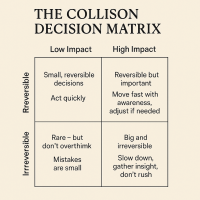 The Collison Decision Matrix Is A Practical Everyday Thinking Tool. Most of us spend a surprising amount of time worrying about decisions. From small ones such as what to wear, what to eat, what to te…
The Collison Decision Matrix Is A Practical Everyday Thinking Tool. Most of us spend a surprising amount of time worrying about decisions. From small ones such as what to wear, what to eat, what to te…The Power Of Asking The Right Question
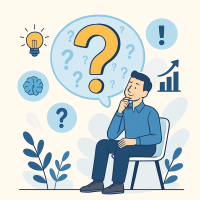 The Power Of Asking The Right Question Lies In The Quest For Insight. To experience the power of asking the right question you must develop the practice of asking questions. The best way to improve th…
The Power Of Asking The Right Question Lies In The Quest For Insight. To experience the power of asking the right question you must develop the practice of asking questions. The best way to improve th…Site Pathways
 Here is a site pathway to help new readers of Zen-Tools navigate the material on this site. Each pathway is based around one of the many key themes covered on this site and contain a 150 word introduc…
Here is a site pathway to help new readers of Zen-Tools navigate the material on this site. Each pathway is based around one of the many key themes covered on this site and contain a 150 word introduc…How To Live With Contradiction - Beyond Thought Let Stillness Speak
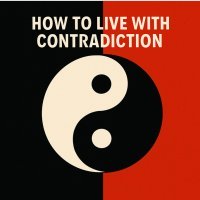 A major impact on so many peoples' lives is the situational contradiction of unfilled realistic expectations. So where does all this leave us? Well here we are, with mental equipment that is more lim…
A major impact on so many peoples' lives is the situational contradiction of unfilled realistic expectations. So where does all this leave us? Well here we are, with mental equipment that is more lim…How To Trust The Process Of Mindfulness - Right Now
 In mindfulness, the process isn’t some distant goal — it's what is happening right now. When we talk about how to trust the process of mindfulness the credibility of the process is heavily dependent…
In mindfulness, the process isn’t some distant goal — it's what is happening right now. When we talk about how to trust the process of mindfulness the credibility of the process is heavily dependent…Inner Mastery For Outer Impact - Mental Clarity For Effective Action
 Insights only matter if they translate into consistent action. In a world crowded with quick fixes and motivational soundbites, the theme “Inner Mastery for Outer Impact” calls us to something more e…
Insights only matter if they translate into consistent action. In a world crowded with quick fixes and motivational soundbites, the theme “Inner Mastery for Outer Impact” calls us to something more e…The Wise Advocate - Helping You Achieve The Very Best Outcome
 The focus of your attention in critical moments of choice either builds or restricts your capacity for achieving the best outcome. When we talk of 'The Wise Advocate' its easy to think of the consigl…
The focus of your attention in critical moments of choice either builds or restricts your capacity for achieving the best outcome. When we talk of 'The Wise Advocate' its easy to think of the consigl…Trust The Process - Beyond The Cliche
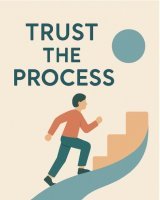 The phrase "trust the process" has become a cliche, the woo-woo mantra of the "self help" industry. Those three little words feel like they ought to mean something useful but hidden behind them are a…
The phrase "trust the process" has become a cliche, the woo-woo mantra of the "self help" industry. Those three little words feel like they ought to mean something useful but hidden behind them are a…The Dopamine Delusion - Why Anticipation Beats Achievement
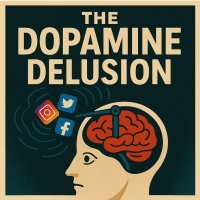 The thrill we feel is not in the having, but in the wanting. The more we have, the more we want. The more things we acquire and the easier things get for us, the more discontent we feel. The more spo…
The thrill we feel is not in the having, but in the wanting. The more we have, the more we want. The more things we acquire and the easier things get for us, the more discontent we feel. The more spo…The Power Of Silence Is Experienced In Your Use Of Language
 Practise the "Beneficial Neurological Delay" for optimal comprehension. The power of silence is experienced in your use of language, specifically: - How you formulate the words you use to think and in…
Practise the "Beneficial Neurological Delay" for optimal comprehension. The power of silence is experienced in your use of language, specifically: - How you formulate the words you use to think and in…